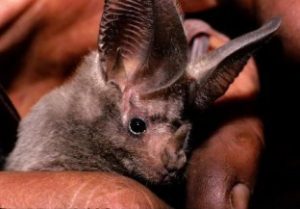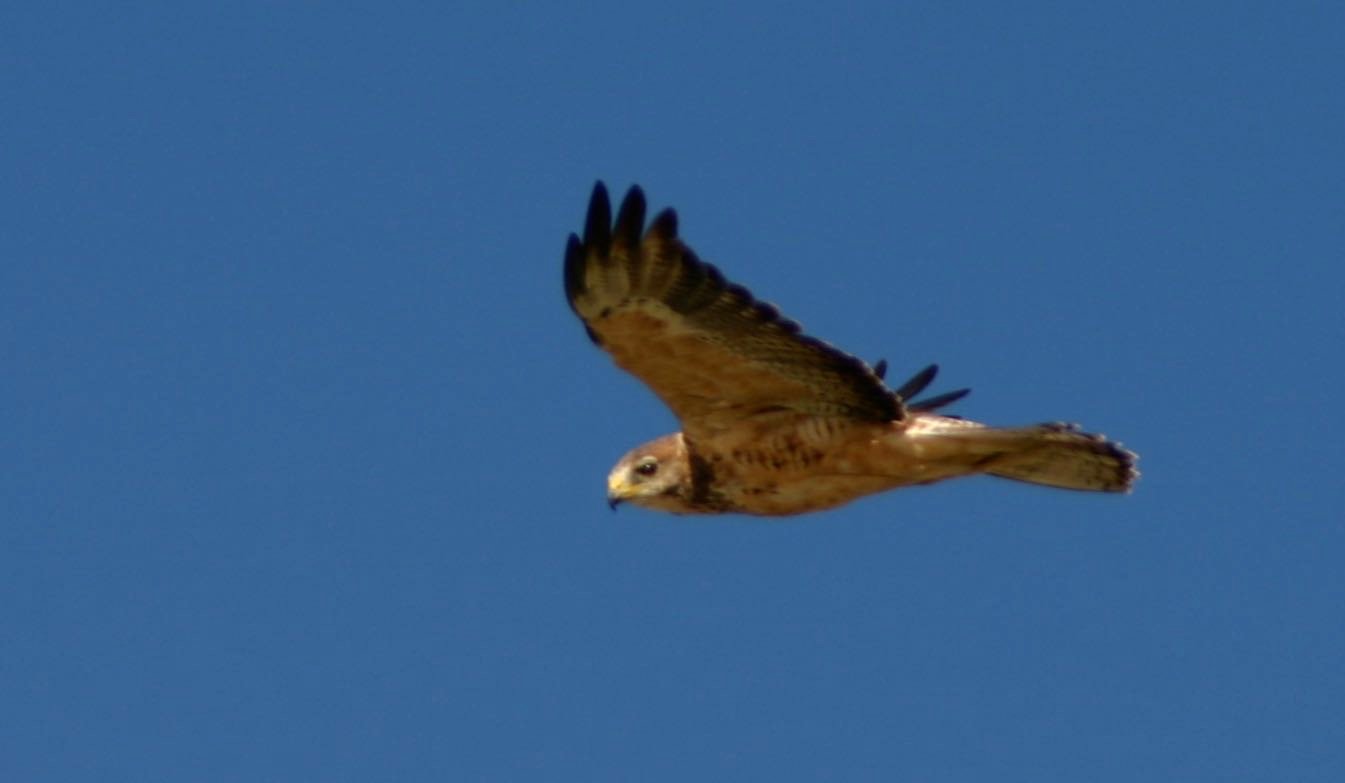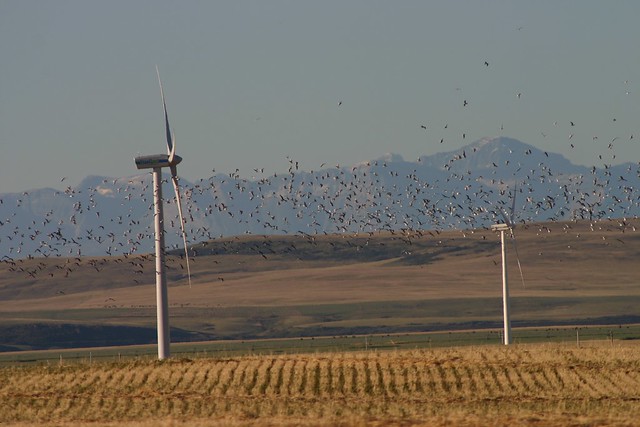By David Dodge and Duncan Kinney

The silver haired bat is one of three migratory bat species in Alberta. Photo courtesy of EOL Learning and Education
Being something of a naturalist myself, some of my most memorable trips have involved seeing birds such as the endangered resplendent quetzal in Costa Rica or the beautiful rose-coloured grosbeak in Alberta.
So we wanted to find the facts behind the claims you often hear about just how bad wind farms are for birds and wildlife in general.
This took us down a rabbit hole of research and browser tabs that landed us in the workshop of John Bowman. He’s a university professor of mathematics who lives in Edmonton, Alberta. Thanks to a school science project, Bowman and his son wound up developing a very cool wildlife observation tool — the Batseeker. It can hear the echolocation clicks that bats make and it turns them into sounds that humans can hear.
It isn’t until you fire up one of these devices after dusk on a summer’s night that you realize just how many bats are out there — even in a big city.
Robert Barclay is a biology professor at the University of Calgary who has studied bats his entire professional career. He’s a fan of devices like the Batseeker.
“You don’t see the bats, but as soon as you turn the microphone on, you can hear them clicking away their echolocation calls. And it brings home that there are lots of them around even in urban areas. And they are doing their part for the ecosystems that they’re in. Birds are easy to see, big mammals are easy to see, but bats are somewhat invisible,” says Barclay.
According to Barclay’s research in southern Alberta, migrating bats are much more likely than birds to be killed by wind turbines.

Robert Barclay is a professor from the University of Calgary who has studied bats his entire professional career
Barclay and his students were hired by wind energy companies to study the effects of wind energy on these small mammals after discovering bodies of bats under the turbines. Their findings on why wind turbines and bats don’t mix pointed to two things: The wind turbine blades move too fast for the bats’ echolocation to help them “see” them, and the low pressure area created behind the tips of the blades damages the bats’ lungs and vascular systems.
It was Barclay’s recommendations that led to mitigation efforts. By turning off the turbines when the winds were low during the bats migratory period in the late summer and early fall, mortality rates were reduced by 50 per cent.
“And when TransAlta looked at the change in revenue, it was, in their eyes, relatively minor. So they’ve adopted that operational mitigation, as we call it, a change in how they operate their turbines to their fleet across the country. And they’re one of the biggest wind energy operators in Canada,” says Barclay.
These mitigation techniques are not ubiquitous across the wind industry but groups like the Bats and Wind Energy Cooperative are working on this issue.
Wind turbines can be hard on migrating bats; more study needs to be done to understand bat populations and behavior and how to reduce mortality.
Bird effects

Keeping turbines off of ridge tops, upwind of side slopes, and away from pronounced valleys, help reduce raptor fatalities in wind farms. Photo David Dodge, Green Energy Futures
A 2013 study led by Environment Canada and published in the Aviation Conservation and Ecology Journal found that in Canada there were 270,000,000 bird deaths a year from human activity — 23,300 of those caused by wind turbines. That means 0.009 per cent of all bird deaths caused by humans in Canada were a result of wind turbines.
Domestic house cats kill 200,000,000 birds a year. Your adorable little kitty is actually a bird-killing machine. And when you combine house cats with deaths from hitting power lines, tall buildings and vehicles you account for 95 per cent of all human-related bird deaths in Canada.
But birds matter, and wind industry representatives like Tyler Jans, the lead regulatory guy at BluEarth Renewables, employ a number of strategies to reduce bird impacts when developing wind projects.
“Keeping turbines off of ridge tops, upwind of side slopes, away from pronounced valleys, obviously, it’s to minimize raptor fatalities. They use the wind currents created by those features to fly and hunt,” says Jans.
Keeping wind turbines off the migratory routes of birds and bats is another effective mitigation tactic. And on the operations side, there are periodic shutdowns or deliberate slowing during specific times of the year when birds are in the air.
But it’s all a balance. Despite what turbines do to bats, Barclay still calls himself a fan of wind and renewable energy.
“I like to tell my conservation biology class, it doesn’t matter how we get our energy, there are environmental impacts. What our goal has to be is two-pronged — reduce our energy consumption, and find ways to mitigate or reduce the environmental impacts of however we get our energy,” says Barclay.
And if scientists like Barclay can help us reduce the impacts on wildlife, wind power can help us fend off one of the greatest threat of all to birds: climate change.
A report compiled by the WWF found that bird extinction rates could be as high as 38 per cent in Europe and 72 per cent in north-eastern Australia, if global warming exceeds 2ºC. Wind energy is not a climate change panacea but it can dramatically reduce carbon emissions — an important step in combating climate change.


